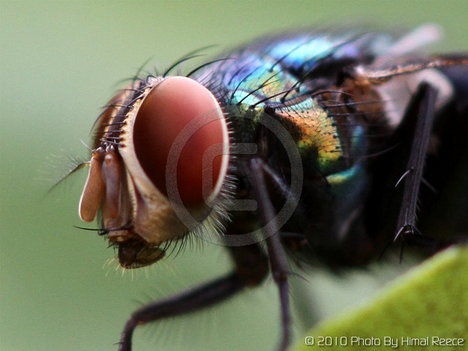
Over the last two weeks, a couple of my photographic colleagues have been thrilling their Facebook circle with spectacular macro photography images. Himal Reece and Jason Prescod have been proudly displaying their close up shots of all manner of insects and flowers and receiving well deserved accolades for their efforts.
I have never seriously tried macro photography and had never never considered it before this week. But as I saw the intricate detail in the caterpillars, butterflies and bees over the last few days, I became first intrigued and then inspired to explore the tiny world of macro photography.
First I thought that I did not have a lens capable of shooting macro in my lineup but I was wrong. While doing research on what lenses were available for my Olympus mount, I realised that my 50mm F2 and my 70-300mm F4-5.6 had macro capabilities although implemented in different ways. The 50mm is a more traditional lens, offering macro capabilities with autofocus and a short minimum focusing distance, while 70-300mm only gets into the macro range when switched to manual focus at 300mm and has a minimum focusing distance of close to one meter. With the two completely different approaches to macro using the lenses in my lineup, I knew that it was going to be a steep learning curve to reach an acceptable level of competence let alone match the quality put out by Himal and Jason.
So I got bitten by the bug!!! Happy to know that I could at least start without a further investment in lenses, I awoke early yesterday and took up my camera, two lenses and a monopod and went outside in my garden looking for bees!!! If this appears strange to you, I must admit that it now seems a tad strange as I am recounting it, but the power of a good photographic challenge has been known to make men do stranger things!
Before even considering the intricacies of learning to use my lenses in macro mode, the issue of movement of the subject due to wind became a major concern. Once I learned to deal with that, mostly with the in-body Image Stabilisation of my E3 and by timing the gentle breezes to give me a relatively still subject, I began to focus on the bees. Should I frame a flower and sit patiently for the bee to get to that particular flower or should I try to track the bees as they go from flower to flower?
After watching the movement of the two bees who graced my few flowering plants that morning, I realised that I could wait all day to get a bee on my perfectly framed flower; so I resorted to Plan B and tried to at least get a bee at all cost before my session ended.
I knew that with this approach, I was unlikely to get the classic shot of the bee in flight approaching the petals or stamen of the flower but my goal was now to get a bee with sufficient detail (hair on their body etc.) on any part of the flower.
I managed to do this to some extent and after an hour or so in which I experimented with about 90 shots, I think I have made a good start towards getting competent in this area. As with any aspect of photograghy, you can only get better with practice and I am inspired enough to give this some time over the next few months so that one day I can create a shot like Himal’s fly!!!
Note: All images appearing in this post are owned and copyrighted by Ian Nicholls, unless otherwise credited. Images may not be reproduced (including on a website or in print) without specific written consent from Ian Nicholls. Please use the Contact Form to email your request for permission.
The full set of pics from this event can be viewed on Flickr
Later,
Ian Nicholls




Great shots. Macro photography is a great hobby as it portrays detail that the naked eye would not recognize on a daily basis. You should pursue it further.
Cheers